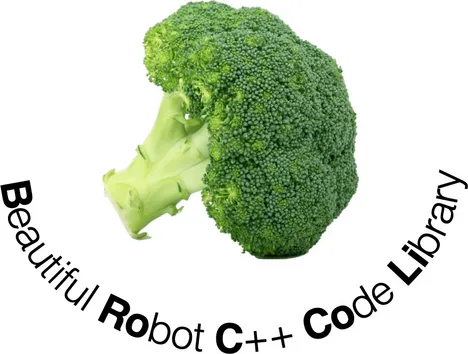AM Softwarepakete
pyFBS

pyFBS is an open source Python package for Frequency Based Substructuring and Transfer Path Analysis. It enables the user to use state-of-the-art dynamic substructuring methodologies in an intuitive manner. With the package also basic and application examples are provided, together with real datasets so you can directly try out the capabilities of the pyFBS. The package was developed as a part of collaboration between the Laboratory for Dynamics of Machines and Structures (LADISK), University of Ljubljana, Faculty of Mechanical Engineering (UL FME) and the Chair of Applied Mechanics (AM), Technical University of Munich (TUM).
Features
Basic features
- 3D display
- FRF synthetization
- Virtual Point Transformation (VPT)
- System Equivalent Model Mixing (SEMM)
-
Singular Vector Transformation (SVT)
Application features
- Operational Deflection Shapes
- VPT Coupling
- VPT Decoupling
- Experimental Modal Analysis (EMA)
- Transmission Simulator in FBS
- In-situ Transfer Path Analysis (iTPA)
- SVT Decoupling
For more information on features, basic and application examples check out the documentation or visit our repository at GitLab: https://gitlab.com/pyFBS/pyFBS
Broccoli
Broccoli ist eine open source C++ header-only Bibliothek für allgemeine Robotik Anwendungen. Die Bibliothek umfasst Tools und Algorithmen für die Steuerung und Regelung von Robotern unter harten Echtzeitanforderungen. Broccoli ist weitestgehend plattformunabhängig und wird am Lehrstuhl unter QNX Neutrino sowie LinuxRT eingesetzt.
Das Projekt ist aus der Überarbeitung von Code des Laufroboter-Projektes entstanden und dient in Robotik-Forschungsprojekten am Lehrstuhl als Grundstein für die Entwicklung neuer Methoden. Broccoli besitzt eine stabile API und steht unter der GPL v3 Lizenz.
GitLab Seite: https://gitlab.lrz.de/AM/broccoli
AMfe

AMfe is a finite element code written in Python that focuses on
- modularity
- extensibility
- easy prototyping of new methods for research
It originates from the demand to make the assembly of the finite element routine easy accessible to the researcher to be able rapidly test new developed hyper-reduction methods. The code has grown over the past years and has gained a very flexible modular structure that enables researchers to rapidly test new methods for simulation of structures. Visit our repository at GitHub: https://github.com/AppliedMechanics/AMfe
Features
Basic features
- Completely written in Python
- Input: Gmsh and GiD
- Output: Paraview HDF5, XDMF
- Geometric Nonlinear total Lagrangian formulation
- Nonlinear Constraints
- Constraint formulations: Elimination (only fixed dirichlet), Lagrange Multiplier, Nullspace Elimination
- Fixed direction Neumann conditions and forces that keep their orientation relative to the body
- Hyperelastic and viscoelastic materials
- HTML Documentation with Tutorials, Fundamentals, Examples and Reference Guide
- Fortran routines to accelerate critical parts of the code
- Parametric meshes (experimental)
- Substructuring (experimental)
Model Reduction Features
- Modal truncation
- Modal and static modal derivatives
- Krylov reduction
- Energy Conserving Sampling and Weighting Hyperreduction (ECSW)
- Polynomial Expansion (Hyperreduction)
AMrotor - Code zur Rotorsimulation

In den letzten Jahren wurde am Lehrstuhl für Angewandte Mechanik der Technischen Universität München eine Matlab-Toolbox zur Simulation rotierender Maschinen entwickelt.
Die Geometrie eines Rotors kann durch einfache 2D-Punktbeschreibung eine Silhouete vorgegeben werden. Daraus wird ein Netz von Balkenelementen erzeugt, die zu einem Masse-Dämpfungs-Steifikeits-Modell (MCK-Modell) zusammengesetzt werden. Im nächsten Schritt werden dem System verschiedene Komponenten wie Lager, äußere Kräfte und Lasten (z.B. Unwucht) hinzugefügt. Es ist auch möglich, zeitveränderliche Lasten und nichtlineare oder sogar aktive Komponenten, wie z.B. Magnetlager, hinzuzufügen. Es können dann verschiedene Arten von Analysen durchgeführt werden, wie beispielsweise Modalanalyse, Campbell-Diagramme oder Zeitintegration.
Die gesamte Toolbox ist objektorientiert programmiert. Der Code ist als Forschungscode gedacht, der sich mehr auf eine einfache Architektur als auf mögichst kurze Rechenzeit konzentriert. Das Ziel ist es, die einfache Implementierung neuer Komponenten mit eigenen Methoden zu ermöglichen und diese zu testen.
Der Quellcode ist auf github.com/AppliedMechanics/AMrotor/ veröffentlicht.
